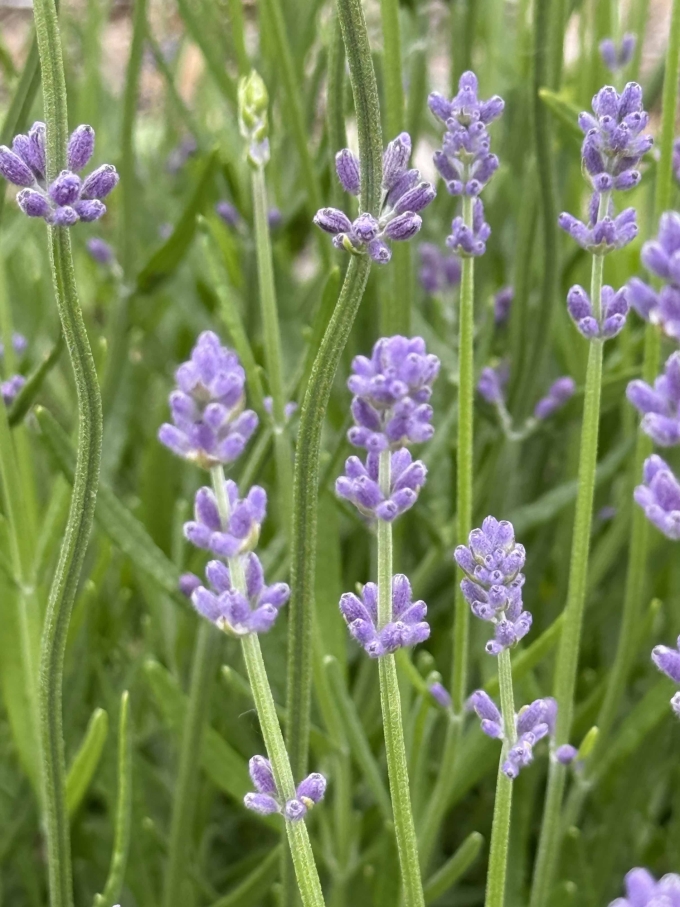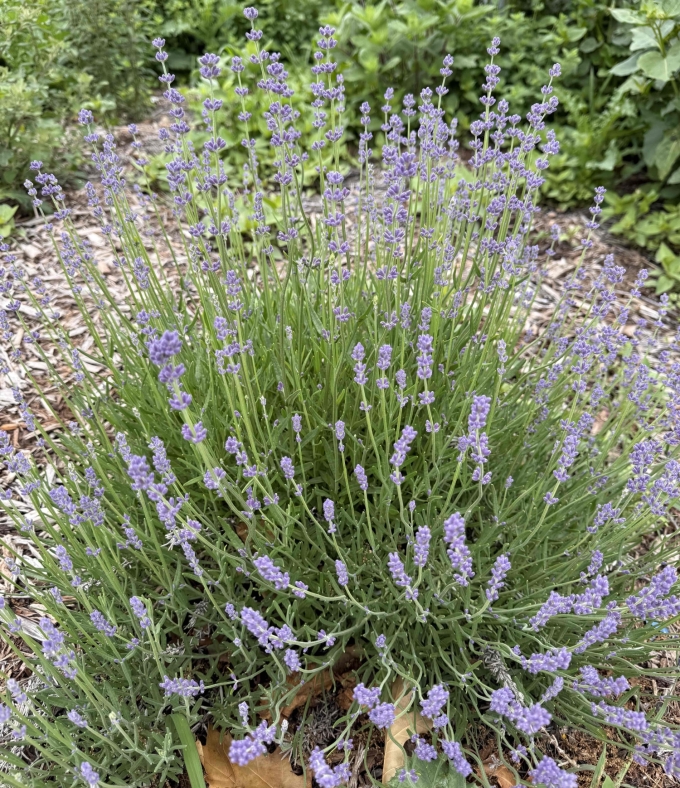Common Name: SuperBlue Lavender
Family: Lamiaceae
Plant Type: Herbaceous Perennial / Subshrub
Hardiness Zones: 5–9 (can be borderline hardy in colder parts of Nebraska with winter protection)
Height: 10 to 12 inches
Spread: 10 to 12 inches
Bloom Time: Late spring to summer; may rebloom
Bloom Description: Deep violet-blue flower spikes
Sun Exposure: Full sun
Water Needs: Low once established
Soil Preference: Well-drained, sandy or rocky soils; alkaline to neutral pH
Management Level: Low
Suggested Use: Pollinator gardens, herb gardens, edging, containers
Attracts: Bees, butterflies
Tolerates: Drought, deer, rabbits, poor soils
Notable Features: Compact habit, intense flower color, fragrant foliage and blooms
Native Range: Species (Lavandula angustifolia) is native to the Mediterranean region; 'SuperBlue' is a cultivated variety selected for improved cold hardiness and color.
Nebraska Growing Notes:
'SuperBlue' is among the best-performing lavenders for Nebraska, thanks to its compact size and enhanced hardiness. Ideal for sunny, well-drained sites, especially in raised beds or along gravel paths. Protection from winter moisture and heavy mulch is critical in USDA Zone 5 areas. Prune lightly after flowering to maintain shape.
Landscape Use:
Perfect for low-water borders, rock gardens, fragrance gardens, and pollinator strips. Also great in pots or small space landscapes.
Caution:
Avoid overwatering or planting in heavy, clay soils. Poor drainage can lead to root rot, especially in winter.
Garden Locations:
Bed(s) 8, 9, 10


